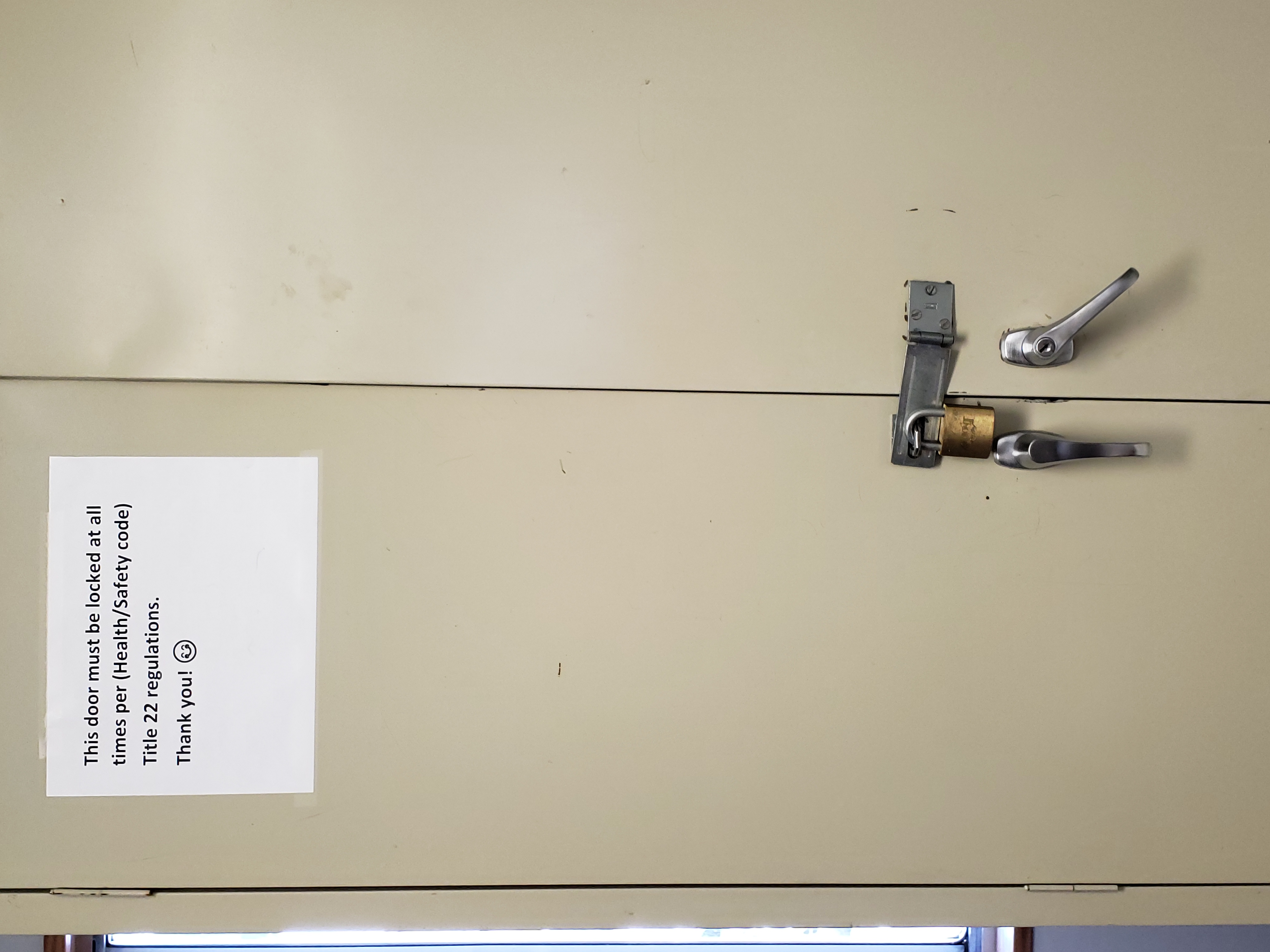21.8: Locks and Inaccessibility Requirements in Child Care Section 101238
- Page ID
- 142058
Section 101238
Within licensing regulations, different requirements exist for inaccessible items to children and what's required to be locked up. Things that need to be made inaccessible include anything that could cause harm to a child, such as cleaning products or places like stairwells when children under the age of 5 are present. Items that need to be kept locked up include guns, ammunition, and poisons. Organizing a childcare facility to keep harmful things that need to be accessible to providers but inaccessible to children, such as cleaning supplies, requires environmental planning. The use of locks on dangerous items is a great way to keep children safe from harmful things. In addition to locks, there are other ways to make items and areas inaccessible to children. If you place items in out-of-reach cabinets, shelves, or drawers, they can be considered inaccessible. Using products labeled as childproofing devices and safety latches can make items inaccessible. Failure to keep items and areas inaccessible as regulations require is a health and safety violation. Any item or space that could cause harm to a child must be made inaccessible.[1]

If children under 5 are present, gates must be in place to ensure the following areas are inaccessible.
- Off-limits areas of your home or Center
- Areas used to store hazardous and dangerous materials
- Stairwells
- Fireplaces and open-faced heaters.
- Swimming or wading pools when not being used for adult-supervised water play
- hot tubs, ponds, and any other bodies of water.
Any sturdy lock that can't be tampered with is acceptable. A lock is a key or combination-operated mechanism used to fasten shut a door, lid, or the like. Products labeled as childproof devices and safety latches are not considered locks unless a key or combination operates them. Firearms and other weapons are not allowed on the premises of a child care center. In family child care homes, guns and ammunition must be locked in a gun safe or other storage units, guns must have a trigger lock on, or the firing pin may be removed from the firearm and stored separately. Weapons and ammunition must be stored apart from one another. There is zero tolerance for failing to keep guns stored and locked as required. Gun and ammunition violations result in citations and civil penalties.[1]

